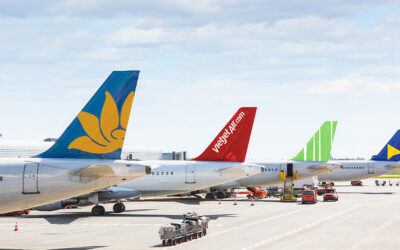What a year! 2016 is set to be one of the safest years in aviation history. There has been a remarkably small number of air accidents this year – a testament to the stringent safety standards now in place not only around EASA countries, but also all around the world. With each year the number of emergency landings only goes down. It can be stated as a purposeful work of aircraft manufacturers and regulatory offices.
In this short review of 2016 BAA Training introduces an overview of EASA regulations and manufacturers’ achievements.
EASA regulations:
- In February EU and China launched a €10 million aviation cooperation project, which will link technical cooperation with a policy dialogue between the European and Chinese aviation authorities. The EU-China APP will focus on the areas of mutual interests, such as aviation safety and security, air traffic management, airports, environmental protection and others. More about the agreement can be found here.
- Medical requirements for pilots were strengthened in August after the Germanwings Flight 9525 accident. More about requirements – here.
- EASA rules addressing non-commercial air operations with aeroplanes and helicopters came into effect in all 32 EASA states. A brand new set of rules became fully applicable, replacing the existing national regulations in the field of air operations. More information here.
- On 16 September 2016 the Agency published its NPA 2016-09 ‘Requirements for Air Traffic Services’ with the objective to harmonise the provision of these essential air navigation services throughout the Union and, consequently, to maintain a high and uniform level of safety in aviation. More information can be found here.
- October came with a new study and recommendations regarding unmanned aircraft system geo-limitations and drone-aircraft collision. The recommendations focused on means to prevent a conflict with a potential consequence of a collision between a small unmanned aircraft and a large commercial aeroplane operating into a major aerodrome. More about the study could be found here.
- In the early November talks about the need to change rules started: the existing rules need to be modified in order to adapt to the new needs of new technologies. In aviation, even the most innovative idea or product is useless, unless the rules allow its installation or use. What decisions were taken can be found here.
- In order to provide a more accessible instrument rating for pilots holding non-commercial licences in general aviation EASA proposed “Easier access for general aviation pilots to instrument flight rules flying”. More information can be found here.
- In December EASA published a proposal to the European Commission on new operational rules to better support pilot mental fitness. The proposals include requirements of pilots’ support programs, psychological assessment and a few others. Detailed information is here.
News from manufacturers:
- On 20 January, the first Airbus A320neo was delivered. The lower fuel consumption results in lower CO2 emissions and gives the A320neo a significantly improved carbon footprint. It is the last step of the A320 Enhanced (A320E) modernisation programme, which was started in 2006.
- Canadian manufacturer Bombardier delivered the first CS300 to the Latvian airline airBaltic in the middle of November. The new aircraft is much quieter – with a four times smaller noise footprint. Moreover, at the moment, it is the greenest commercial aircraft in the world, as it is the first aircraft to have a transparent declaration of the life-cycle environmental impact, helping to reduce CO2 and NOX emissions by 20% and 50% respectively. So far Bombardier has 237 orders and 1 delivery of CS300 aircraft.
- The first Airbus A321neo equipped with CFM International LEAP-1A engines completed its maiden flight on February 9th from Hamburg, Germany. The flight lasted five hours and 29 minutes during which tests were performed on the engine speed variation (low/high), systems behaviour and validatation of the aircraft’s flight envelope. The first delivery is planned for the next year.
- Boeing started the final assembly of the first 787-10 Dreamliner in December 2016. The 787-10 is the third member of the super-efficient, passenger-pleasing 787 Dreamliner family. As a stretch of the 787-9, the 787-10 will retain 95 percent commonality while adding seats and cargo capacity, setting a new benchmark for fuel efficiency and operating economics – 25 percent reduced fuel per seat and emissions compared to the airplanes it is intended to replace. The first 787-10 is expected to fly in 2017 and the first delivery is scheduled for 2018.







